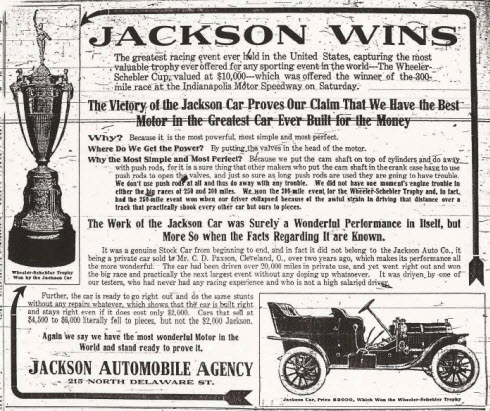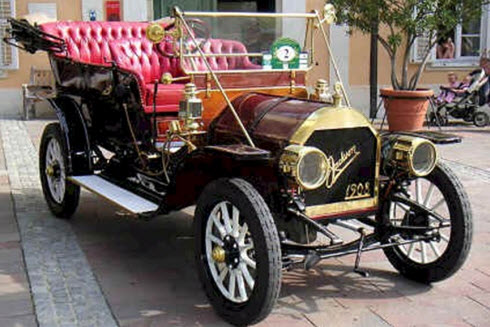


Framed or unframed, desk size to sofa size, printed by us in Arizona and Alabama since 2007. Explore now.
Shorpy is funded by you. Patreon contributors get an ad-free experience.
Learn more.

- Details, Details
- What's that building to the left of the tower?
- Coal Barges
- Bromo-Seltzer
- Inner harbor
- The Basin
- What a headache!
- Giant stepladder?
- Baldwin 62303
- Baldwin VO-1000
- Cold
- No expense spared
- Tough Guys
- Lost in Toyland
- And without gloves
- If I were a blindfolded time traveler
- Smoke Consumer Also Cooks
- Oh that stove!
- Possibly still there?
- What?!?
- $100 Reward
- Freeze Frame
- Texas Flyer wanted
- Just a Year Too Soon
- WWII -- Replacing men with women at the railroad crossing.
- Yes, Icing
- You kids drive me nuts!
- NOT An Easy Job
- I wonder
- Just add window boxes
Print Emporium
Modern Motorist: 1908

Washington, D.C., or vicinity circa 1908. "Mrs. John E. Harris." At the wheel of a shiny new Jackson. Harris & Ewing Collection glass negative. View full size.
Jackson and the Indianapolis 300
The Jackson Car was made in Jackson, Michigan from 1903 - 1923. This appears to be a circa 1908 Model C with a handmade leather Maryland license plate.
The next year a standard Jackson car was leading the 300 mile long Wheeler-Schebler Trophy Race at the Indianapolis Motor Speedway (not yet paved with brick) by more than 10 miles when the race was called off because of poor track conditions and a deadly crash.
No winner of the race was declared, but Jackson announced their win in at least one ad and showed a picture of the trophy in the ad. They had covered 235 miles (94 laps).
Since Jackson was not declared the winner they sued for the trophy, but the company lost in court. It was not until many years later they they were acknowledged as the winner of the race.
Only six cars out of 19 were still running when the race was called. One of those six drivers was Roy Harroun who would later go on to win the first Indianapolis 500 in 1911. He was also the first person to be presented the Warner-Schebler trophy when he won a 200 mile race at the Speedway the next year.
The 7 foot tall trophy was made by Tiffany and valued at $8,000 by its donors. The trophy was only the property of the winning company/driver for a year. When Harry Hartz won the trophy three years in a row, per the deed of gift for trophy, it was permanently awarded to him. He donated it to the Indianapolis Motor Speedway Museum when it opened in 1956. It is still on exhibit there today.
A circa 1908 Jackson can be seen in the movie Long Day's Journey Into Night (1962).




Re: Count 'em
There are five "stem-like" projections on each wheel. One of them (e.g., the one at about 1:00 on the right front wheel) is the air valve stem. The four that are spaced at 90 degrees around the wheel are "staybolts" (or "lugs") that held the tire in the rim. A couple of years after this picture, Firestone introduced the "detachable rim" that obsoleted the staybolt system.
Searching for "tire staybolt" should find a Google book with some illustrations that sort of show how they worked.
Count 'em
Each tire/wheel has four "stems" projecting inward. One looks like a standard stem for filling the tire with air. The other three are different from the first, but they look alike. Any idea what they were used for?
[They're rim clamps. -Dave]
Patched Tire?
Maybe not so new considering the condition of the tires. Great pic though.
I thought she looked familiar....
Well not *too* shiny
A fair bit of mud on the inside of the fender, though I suppose it was unavoidable given the roads of the time. By the way, I suspect that Mrs. Harris wasn't actually driving the car, but just posing for the photographer. None of her clothes are being buffeted by the wind and her posture seems rather contrived.

























On Shorpy:
Today’s Top 5